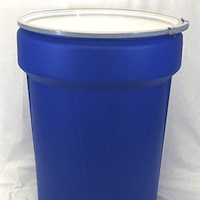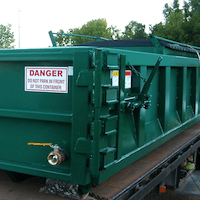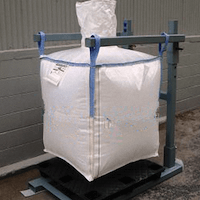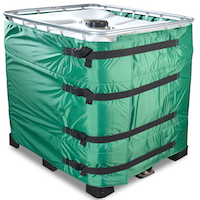Guest Post
From: Freightos, the online freight marketplace
Freight Shipping Hazardous Materials
What is HAZMAT, and what does it mean for your freight and shipping needs? Explore the nine US HAZMAT classes by clicking on any sign in our Hazardous Materials Table for sub-categories, examples and other key information.
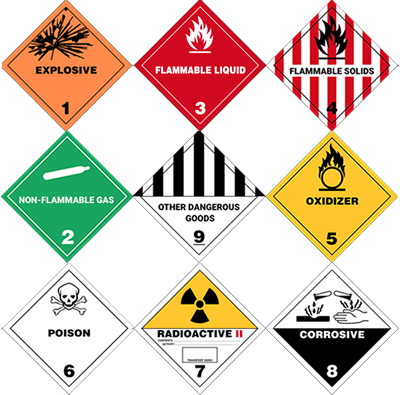 What are “dangerous goods”?
What are “dangerous goods”?
“Dangerous goods” are defined as any solids, liquids, or gasses with hazardous susceptibilities that can cause harm to living things, property, or the environment. In the US, UK, and Canada, these goods are referred to as hazardous materials or HAZMAT. Dangerous goods can include materials that are radioactive, flammable, toxic, explosive, and those of similar characterizations.
How are hazardous materials classified for freight shipping?
There are nine overarching classes of hazardous materials, most of which are then further divided into multiple subcategories. Each hazard class is assigned it’s own diamond shaped label to communicate the hazard and class number. Hazard classifications are also known as hazard identifiers.
Scroll through the Hazardous Materials Table above to explore each of the nine HAZMAT classes more thoroughly.
The Hazardous Materials Table breaks down some commonly transported dangerous goods according to HAZMAT classes. Some additional commonly overlooked hazardous materials include:
- Camping gear/ equipment (signal flares, heat producing packets, cooking stoves)
- Cosmetics and perfumes
- Frozen food
- Biological materials
- Certain battery powered equipment
- Small gas cylinders and aerosols
- Toolbox items (propane torches, touchup paint, adhesives, urethanes, epoxies)
- Equipment containing radioactive sources
- Breathing apparatus & diving equipment
- Dry ice (for air shipments)
- Household goods (paints, bleaches, spray cans)
- Laboratory/testing equipment
- Refrigeration equipment & mercury switches
- Fire extinguishers
- Magnetized material (by air)
How is the transport of hazardous materials regulated?
The transport of dangerous goods needs to be regulated in order to avoid accidents and damage when possible. Most countries regulate hazardous materials by federal and international law, but classifications may vary by country, mode of transport, and type of goods.
In order to unify international classification systems and facilitate the transportation of dangerous goods, the United Nations Economic and Social Council (ECOSOC) issues the UN Recommendations on the Transport of Dangerous Goods, which serve as the basis for most regulatory policies monitoring the transportation of dangerous goods. Those standards have been adapted by the International Air Transport Association (IATA) for the specifications of air freight, and by the International Maritime Organization (IMO) for ocean freight. IMO member countries also abide by the HNS Convention, which offers compensation for spills of dangerous goods in the sea.
What documentation is required for the transport of hazardous materials?
There is a certain amount of specific documentation required for shipping hazardous materials and dangerous goods. First of all, a detailed description of the goods must be provided on the freight quote, commercial invoice, bill of lading, shipment packing list, and all other relevant shipping documents.The Shipper’s Letter of Instruction needs to detail how to handle the goods, and should include emergency contact information.
In addition, the shipper needs to provide a special declaration called a Material Data Safety Sheet, which identifies and details the following:
- Product identification (name, use, etc.)
- Hazardous ingredients included in the goods
- Physical data about the goods
- Fire and explosion data
- Reactivity Data
- IATA and IMO both provide standard formats of HAZMAT shipping papers for air freight and ocean freight, respectively.
How do I ship hazardous materials?
As described, the process for shipping hazardous materials is somewhat extensive, requires the described precise documentation, and can be a dangerous undertaking.
If you are planning on shipping hazardous materials, prepare to follow these steps:
- Work with your factory/supplier to identify and classify your dangerous goods
- Determine with a freight forwarder which transportation methods will accept your goods, and which hazmat regulations apply.
- Together make sure you’ve met any application and qualification process required for hazmat shipments.
- Work with your factory/supplier to package your goods properly. There are three packing groups that determine the degree of protection required for dangerous goods during transport:
- Group I: Greatest danger, most protective packaging required
- Group II: Medium danger
- Group III: Least danger, least protective packaging required
- Document everything. See the previous question for a more detailed list of required documentation.
- Work with your factory/supplier to mark and label everything properly:
- Placard with designated classification
- Four digit UN number

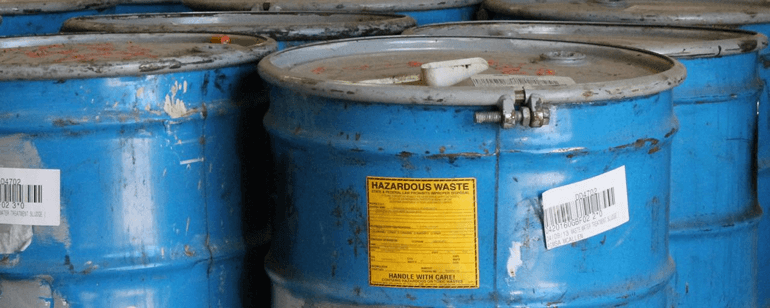

 P.O. Box 8149
P.O. Box 8149